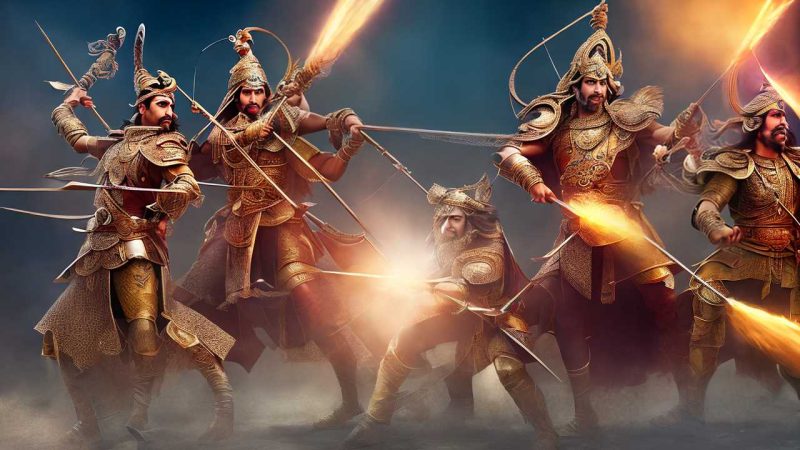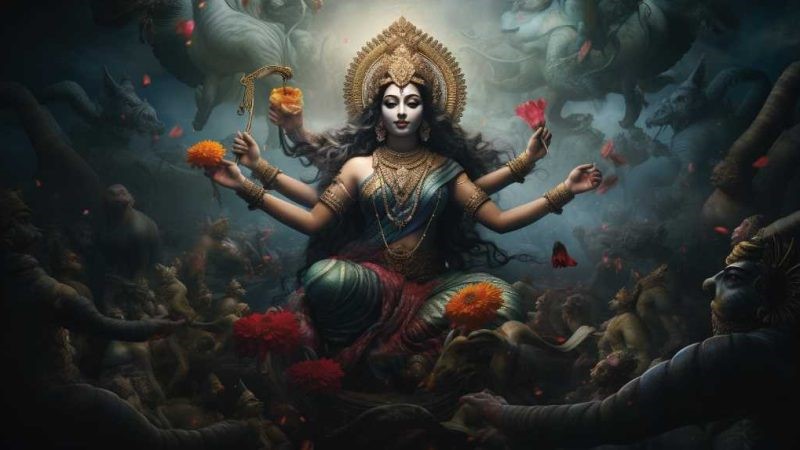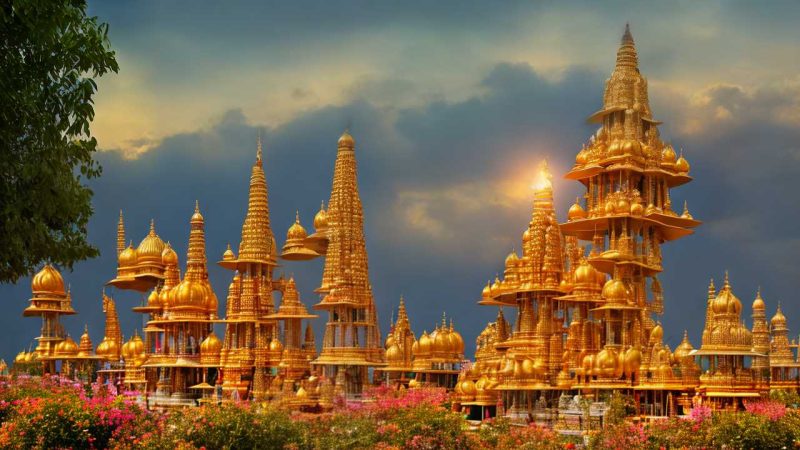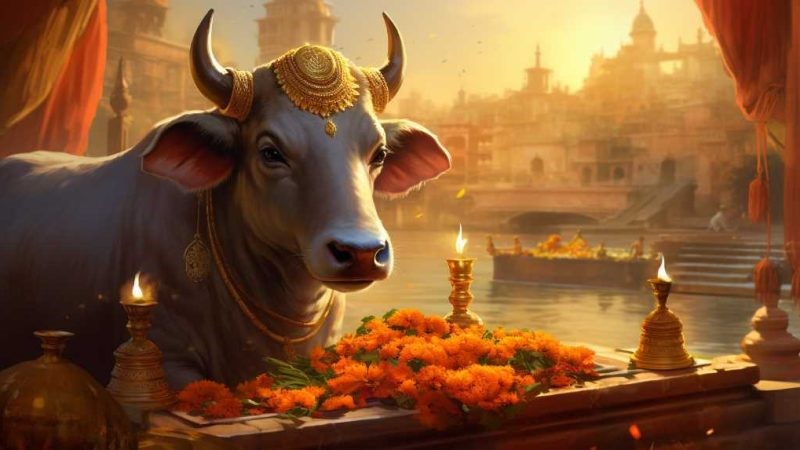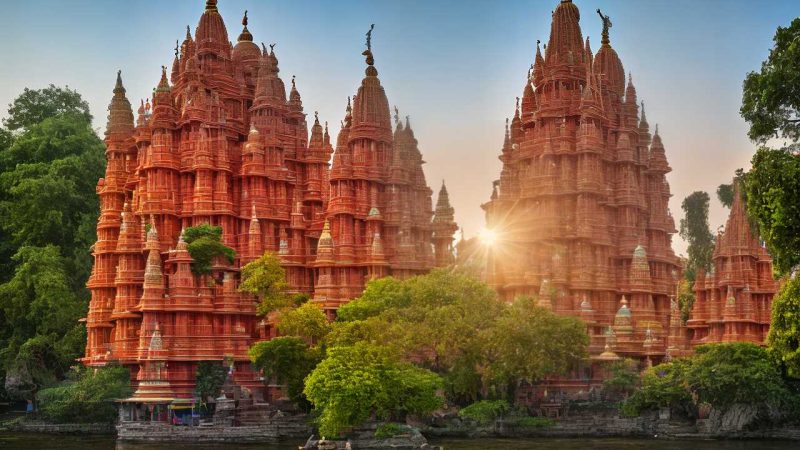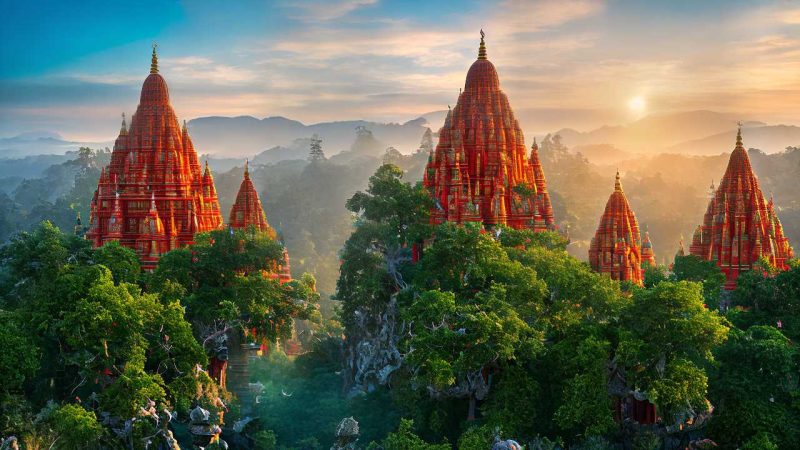The Genesis of the Gods Hindu Creation Stories
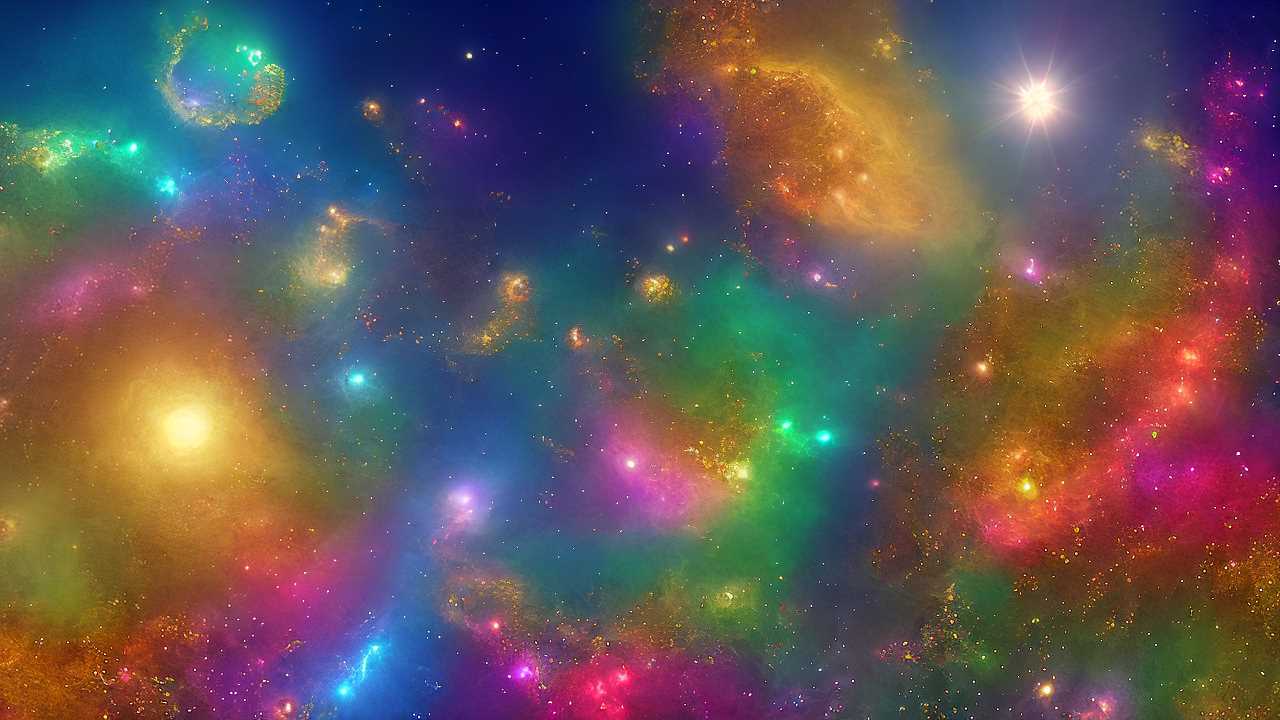
Hindu myths offer many ways of looking at how the world was created. They are full of symbols and big ideas about the universe. Three gods, known as the Trimurti, play a key role in these stories. Brahma is the god who creates, Vishnu keeps things going, and Shiva is in charge of ending things. These roles help people understand the cycle of life and the universe.
For example, Brahma was born from a cosmic egg, which shows how life can come from something that seems lifeless. Vishnu’s navel-lotus is where Brahma sits, which tells us that everything is connected in some way. Shiva’s dance is about more than just destruction; it’s also about making room for new things to begin.
These myths are not just old stories. They help us think about the world and our place in it. They remind us that everything changes and that this is a natural part of life. This helps us accept changes in our own lives and see them as part of a bigger picture.
In summary, Hindu creation stories are more than just tales of gods and goddesses. They give us a way to think about life’s big questions and understand the never-ending cycles of the world around us. This can make us feel more connected to the universe and help us find our own meaning in it.
In the Beginning: Srishti
In Hindu stories about how the world began, ‘Srishti’ is the word for creation. It’s when everything in the universe comes into being, starting from nothing, because of a higher power’s wish. This idea is really important because it shows how everything started.
Hindus think about creation in a circle, not a straight line. This means that the universe isn’t made just once; it’s a cycle that keeps going through times of making, keeping things going, and then ending, before starting all over again.
Experts who study ‘Srishti’ say it’s a way to show how the world and the divine fit together perfectly. They point out that this balance is key to understanding how everything in the universe works together, both what we can see and what we can’t.
Let’s give a specific example to make it clearer. Think of it like a year with its seasons: spring for creation, summer for preservation, autumn for dissolution, and then winter, which feels like a pause before it all begins again with spring. Just like the seasons, ‘Srishti’ is a continuous cycle, always moving and changing. It’s a reminder that in the grand scheme of things, creation is an ongoing process, with each part important to the whole.
The Cosmic Functions: Trimurti
In Hindu beliefs, there’s a group of three gods called the Trimurti. These gods are very important because they look after the universe in different ways.
Brahma is like an inventor. He starts everything by making the universe. It’s like he’s drawing up plans and building everything we see around us.
Vishnu then takes care of the universe, making sure everything runs smoothly, kind of like a good boss who looks after their employees and keeps things in order.
Shiva’s job is to end things, but this isn’t bad because it makes way for new beginnings. It’s like when you clear out old stuff from your house to make room for new things.
This idea of the Trimurti shows us that creation, care, and ending are all connected and important for the world to keep going.
This concept is not just an old story; it reminds us that everything changes and that’s a normal part of life. For example, in nature, we see this with the seasons. Winter ends so spring can bring new growth. Similarly, in life, sometimes old ideas have to end so new and better ones can take their place.
This is the deep wisdom in the Trimurti’s roles – they teach us about the balance needed in the world.
Brahma’s Divine Birth
To get a full picture of Hindu myths, it’s helpful to look at the main gods called the Trimurti. Brahma is one of them, and he’s known for creating the world. According to the stories, he came from a golden egg or appeared on a lotus flower that grew from Vishnu, another major god who was sleeping. This story is not just about how Brahma was born; it’s a way to show how the universe started in an orderly way from a state of confusion. It’s like Brahma’s birth is a symbol for the idea that the world is always being made and remade. This concept is a big deal in Hindu beliefs because it shows that everything is always changing and nothing stays the same forever.
In simple terms, Brahma’s birth is important because it tells us about the Hindu idea that the universe has a cycle of starting, existing, and then starting over again. This cycle is a key part of their understanding of the world. When talking about Brahma’s birth, it’s more than just a story; it’s a way to explain this ongoing process of change.
Vishnu’s Preserving Power
In Hindu stories, Brahma creates the world, but Vishnu keeps it going. His job is to make sure everything runs as it should and that people follow dharma, which is like the cosmic law.
Vishnu is often shown in stories as coming to Earth in different forms, called avatars, to fix things when they go wrong. These avatars, like Rama and Krishna, show how Vishnu actively works to keep things right and fair in the world.
When we look at what Vishnu does, we see a big idea in Hindu beliefs: that time goes in cycles and there’s always work to be done to keep things just and balanced.
For example, when Vishnu comes as Rama, he fights the demon king Ravana to rescue his wife Sita, showing us how good can overcome evil. As Krishna, he teaches important lessons about life and duty in the Bhagavad Gita.
These stories aren’t just exciting tales; they help us understand how Hindus see the world and our place in it. They show us that doing what’s right matters and that there are forces out there, like Vishnu, working to keep the balance.
Shiva’s Dance of Destruction
Just like Vishnu keeps the universe running, Hindu stories tell us about Shiva, who also has a big job. Shiva performs a dance called the Tandava, which is about the end of things that are worn out, making space for new beginnings.
This dance shows that everything changes and nothing lasts forever. Shiva’s job of tearing down the old is not about being mean, but it’s part of a natural cycle that keeps everything balanced. It’s like how a garden needs old plants to be cleared out so new ones can grow.
Shiva’s dance reminds us that endings are necessary for new things to start. This idea helps us understand that the world is full of different parts that work together, even when they seem opposite. It tells us that letting go of the old is just as important as making new things.
Conclusion
Hindu myths about the beginning of the world show us a detailed universe where three main gods have special jobs. Brahma starts everything off when he is born, Vishnu keeps things running smoothly, and Shiva’s dance brings things to an end, only to start again. This isn’t just a story; it tells us about the deep ideas and beliefs in Hinduism. These gods and their actions help people understand how life keeps going and how everything is connected in a big cycle.
Let’s break it down a bit more. Brahma’s role is like the spark that lights the fire. He gets the world going. Think of him as the architect who designs a building.
Then there’s Vishnu, who acts like a manager, making sure that everything keeps working as it should.
Finally, Shiva is there to wrap things up when it’s time, but he also sets the stage for new beginnings. Imagine closing an old store to open a fresh, new one.
It’s this very idea that keeps the Hindu worldview rich and full of meaning.

